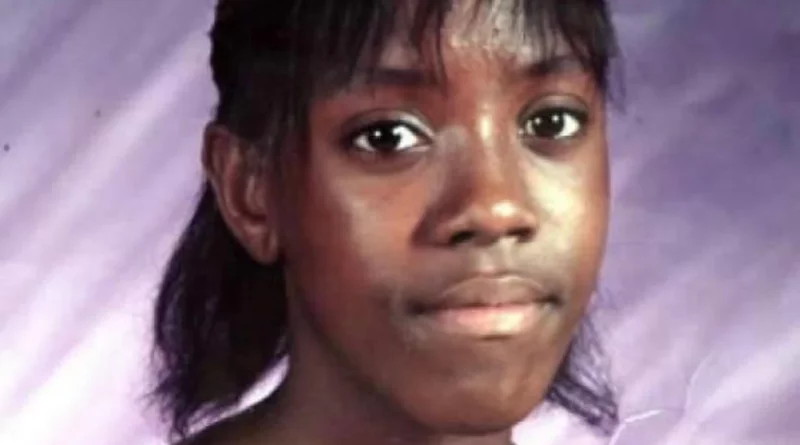The Disappearance and Murder of Georgia Leah Moses in Santa Rosa, California
The disappearance and murder of 12-year-old Georgia Leah Moses in Santa Rosa, California, is a haunting and tragic case that has remained unsolved for over two decades. Georgia’s life was tragically cut short in August 1997 when she vanished after being seen with an unidentified man. Her body was discovered over a week later, but the mystery surrounding her death has continued to confound investigators, her family, and the community. This article delves into the details of Georgia’s disappearance, the investigation into her murder, and the enduring hope for justice that her family holds.
Who Was Georgia Leah Moses?
Georgia Leah Moses was born on January 7, 1985, and lived in Santa Rosa, California. She was described by her family and friends as a bright, caring, and resilient young girl who had a strong sense of responsibility despite her young age. Georgia had faced significant challenges early in life, including a family situation that required her to take on responsibilities beyond her years, particularly in caring for her younger sister.
Her mother, who struggled with mental health issues, relied heavily on Georgia, and the young girl shouldered a great deal of responsibility at home. Despite these challenges, Georgia remained hopeful about her future and protective of her family, showing maturity that belied her age.
The Last Known Sightings of Georgia
On the evening of August 13, 1997, Georgia Moses was seen in Santa Rosa with an unidentified adult man. Witnesses reported seeing the two together, but the man’s identity has never been confirmed. There were no clear indications at the time that Georgia was in danger, but she disappeared shortly afterward. Her family and friends became increasingly concerned when she failed to return home that night, and efforts to locate her in the following days proved fruitless.
Despite these concerns, Georgia was not immediately reported missing. The complexities of her family situation and Georgia’s occasional independence may have contributed to the delay. By the time authorities became fully aware of her disappearance, precious time had already been lost, making the subsequent investigation more challenging.
The Discovery of Georgia’s Body
On August 22, 1997, nine days after she was last seen, a group of construction workers repairing a broken guardrail along Highway 101 near Petaluma, California, made a grisly discovery. In a rural, wooded area off the highway, they found the decomposing body of a young girl. The body was in such a state that immediate identification was not possible.
Investigators were called to the scene, where they noted that the girl’s remains had been hidden in a remote location, suggesting that someone had gone to great lengths to conceal the crime. It was clear that the young girl had been a victim of foul play, but with little evidence at the scene and the advanced decomposition of the body, determining the exact cause of death proved difficult.
Identification Through Dental Records
The girl found off Highway 101 was identified as Georgia Leah Moses through dental records on August 25, 1997. Her family’s worst fears were confirmed, and the reality of Georgia’s murder set in. The news devastated those who knew her, especially her younger sister, who had looked up to Georgia as a source of guidance and stability.
The identification of Georgia’s body also marked the beginning of a murder investigation that would soon stall due to a lack of concrete evidence and viable leads. Authorities hoped that by publicizing details of Georgia’s last known movements, someone might come forward with information that could point to the person responsible for her death.
The Investigation and Challenges in Finding the Unidentified Man
The investigation into Georgia’s murder faced numerous hurdles from the outset. While witnesses had reported seeing Georgia with an unidentified adult man on the night she disappeared, the descriptions of this individual were vague, and no one had any information that could clearly identify him. Police released composite sketches based on witness descriptions, hoping that someone in the community might recognize him, but these efforts did not produce any significant leads.
The lack of surveillance footage from the time and the remote location where Georgia’s body was found further hampered the investigation. Detectives worked tirelessly to piece together the timeline of events leading up to Georgia’s disappearance, interviewing friends, family members, and anyone who might have seen her in those crucial last hours. Despite these efforts, the identity of the man last seen with Georgia and his possible connection to her murder remained elusive.
The Impact on the Santa Rosa Community
Georgia Moses’s murder sent shockwaves through the Santa Rosa community, where many were deeply troubled by the tragic loss of such a young life. The local media covered the story extensively, highlighting both the vulnerability of Georgia’s situation and the apparent dangers she faced. The community came together to mourn her loss, organizing vigils and memorials to honor her memory.
However, as months turned into years without any significant progress in solving the case, frustration and sorrow turned into a sense of helplessness. The murder of Georgia Moses became one of those tragic stories that lingered in the community’s collective memory, a stark reminder of the dangers that lurk in the shadows and the pain of unanswered questions.
Theories About Georgia’s Death
Several theories have emerged over the years about what might have happened to Georgia Moses and who might be responsible for her death. One of the most prominent theories is that the unidentified man last seen with her played a central role in her disappearance. This theory suggests that he may have lured Georgia into a dangerous situation, leading to her tragic fate.
Others have speculated that Georgia’s vulnerable position, as a young girl with significant responsibilities and little adult supervision, made her a target for someone looking to exploit that vulnerability. Despite these theories, the lack of physical evidence linking any suspects to the crime scene has made it difficult for investigators to move forward.
The Role of Media and Public Appeals
Over the years, Georgia Moses’s family, especially her younger sister Angel Turner, has made public appeals for information that could lead to the resolution of the case. Angel, who was just seven years old at the time of Georgia’s death, has been vocal in her quest for justice, keeping her sister’s memory alive and calling for anyone with information to come forward.
True crime podcasts, social media platforms, and local news outlets have helped to keep the case in the public consciousness, but despite this attention, no breakthrough has been achieved. Each year, as the anniversary of Georgia’s death passes, her family and supporters renew their calls for answers, hoping that new technology or a witness’s change of heart might finally lead to a resolution.
The Lasting Pain of Unsolved Cases
For the family of Georgia Moses, the pain of her loss is compounded by the fact that her killer remains unknown and unpunished. Unsolved cases like Georgia’s create a unique kind of anguish, where the need for closure is never met, and the possibility of justice remains tantalizingly out of reach.
Georgia’s story is particularly painful because it highlights how society often fails its most vulnerable members—children who bear adult responsibilities and lack the protection they deserve. The tragic circumstances of her death are a stark reminder of the dangers that children like Georgia face and the need for communities to step in and offer support before tragedy strikes.
Hope for Justice: Advances in Cold Case Investigations
Despite the challenges, there is hope that advances in forensic science and investigative techniques might one day bring new clues to light. With DNA technology evolving rapidly, cold cases from the 1990s have seen a resurgence in solvability, as previously untapped evidence is re-examined with modern methods.
Investigators in Georgia’s case have not ruled out the possibility of a breakthrough, especially with the rise of genetic genealogy, which has helped solve other cases that once seemed impossible. By matching DNA from crime scenes to distant relatives through publicly available databases, authorities have been able to identify suspects in cases that went cold for decades. If any new evidence is found or if a witness finally comes forward, it could be the key to finding Georgia’s killer.
Georgia’s Legacy: A Call for Awareness and Advocacy
Georgia Leah Moses’s story continues to resonate with those who advocate for missing and murdered children. Her sister, Angel Turner, has turned her personal tragedy into a mission to ensure that Georgia’s memory is not forgotten and to raise awareness for other vulnerable children who may find themselves in similar situations.
Georgia’s legacy is a call for greater vigilance in protecting children and for communities to look out for those who are most at risk. Her life and death serve as a reminder of the importance of support systems and the critical role that each person can play in noticing signs of danger and taking action to prevent harm.
Conclusion
The disappearance and murder of Georgia Leah Moses remain a painful mystery, one that has lingered in the hearts of her family and community for more than two decades. While the investigation has yet to yield the answers that her loved ones so desperately seek, the hope for justice has not dimmed. Georgia deserves to be remembered not only for the tragic way her life ended but also for the bright spirit she was in life. As long as people continue to remember her story and seek the truth, there is hope that one day, Georgia Leah Moses will receive the justice she has long been denied.
Discover more from City Towner
Subscribe to get the latest posts sent to your email.




